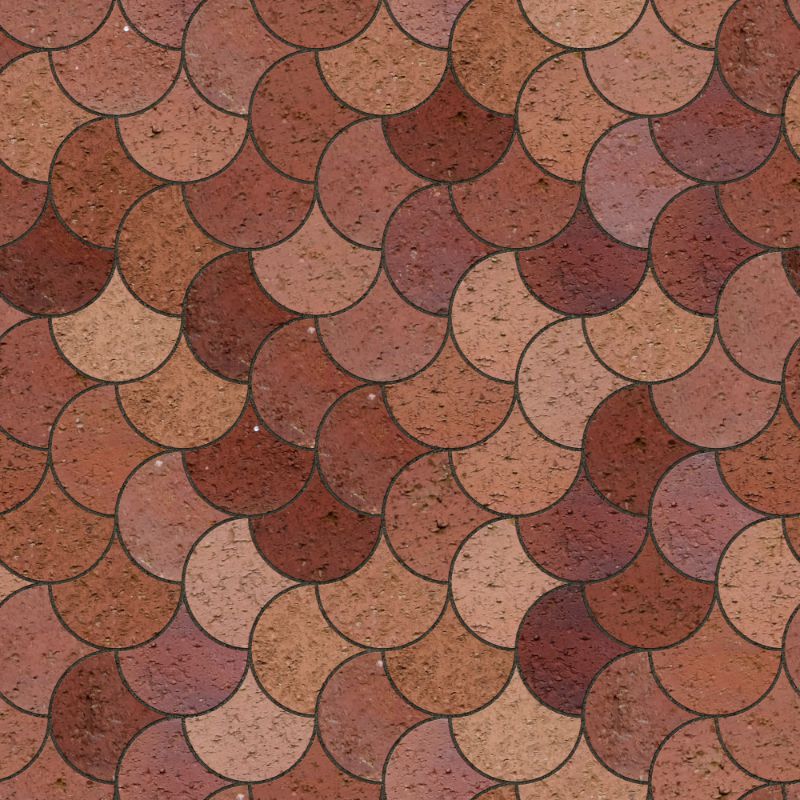Dragfaced Brick Alternating Fishscale
Category
Brick
Download
Edit
Dragfaced bricks are similar in formation and properties to regular bricks, but are scraped before the heating process to create a unique, textured face finish. The colour and size of dragfaced bricks can vary depending on mineral combinations and factory manufacturing methods. Often used in combination with standard brick types, dragfaced bricks are ideal for creating a rustic look on building facades, cladding, gardens, landscaping and internal decoration. This particular texture employs natural clay tones, ranging from light red to dark, red-browns with subtle orange and purple hews creating a rich spectrum of natural brick tones. The earthy, neutral tones in this brick texture make for an ideal base material to compliment natural stone, concrete, timber and metals.
Preferred for their domestic, human scale, bricks are one of the easiest construction materials to handle and build with and are well suited to domestic, care, primary education, cultural and community building types, will remaining popular in industrial and utilitarian structures due to their low cost and ease of manufacture. They can be used in a range of external and internal components, including building cladding for facades, paving and landscaping elements, or for internal decoration and fireplaces, while the dragfaced finish creates an industrial, aged, weathered aesthetic.
Bricks are one of the most common materials in architecture and construction, with origins dating back to 7000BC. Manufactured by firing clay in moulds, they can be cut to standard sizes to form a versatile, durable, building product. The firing of the clay removes moisture and strengthens the brick, making for excellent load-bearing and weather resisting properties, remaining popular due to the cost-effective manufacturing process and an abundantly available natural material. Bricks can also be specially manufactured to suit a variety of angles, curves and unique shapes. Popular due to their low maintenance, durability, and attractive variety of colours, textures, and finishes, bricks are used both structurally and in cladding systems, while a variety of finishes and palettes within the one product can help create a rustic, weathered appearance increasingly popular in bespoke contemporary domestic, cultural and workplace environments.
A seamless brick texture with dragfaced brick arranged in a alternating fishscale pattern. Seamless textures can be tiled repeatedly across a surface without visible seams making them useful for architectural drawings and 3D models. This image can be used as a SketchUp texture, Revit material or imported into Photoshop for use in 2D illustrations. A high resolution version of this texture is available, as well as CAD hatches and PBR maps with Architextures Pro.

